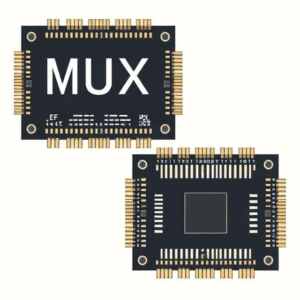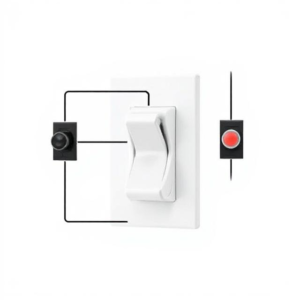What is a Multiplexer?
A Multiplexer (MUX) is a digital switch that allows you to select one input from many inputs and send it to a single output based on control signals. It acts like a traffic controller for data, deciding which signal to transmit from multiple options to one output. This functionality makes multiplexers essential in digital circuits for managing data paths efficiently.

How Does a Multiplexer Work?
Think of a multiplexer as a funnel that takes multiple input lines and routes only one of them to the output. The specific input chosen is determined by control signals.
Components of a Multiplexer:
- Inputs: These are the various data sources or signals you may want to select from.
- Control Signals: These signals provide the necessary instructions to the multiplexer, indicating which input to send to the output.
- Output: The signal selected by the control signals is routed here.
Example:
Imagine you have 4 TV channels (inputs) but only one TV screen (output). Using a remote control (control signals), you can choose which channel to display on the screen.
- Channels (Inputs): Channel 1, Channel 2, Channel 3, Channel 4
- Remote Control (Control Signals): The control signals can be a combination of buttons like “1”, “2”, “3”, or “4”, which instruct the TV to display the selected channel.
- TV Screen (Output): The selected channel will be shown on the screen.
In this example, the multiplexer helps you choose one TV channel (input) and sends it to the TV (output) based on the control signal you select.
Types of Multiplexers:
2-to-1 Multiplexer (2:1 MUX)
Inputs: 2
Output: 1
Control Signals: 1
4-to-1 Multiplexer (4:1 MUX)
Inputs: 4
Output: 1
Control Signals: 2
8-to-1 Multiplexer (8:1 MUX)
Inputs: 8
Output: 1
Control Signals: 3











